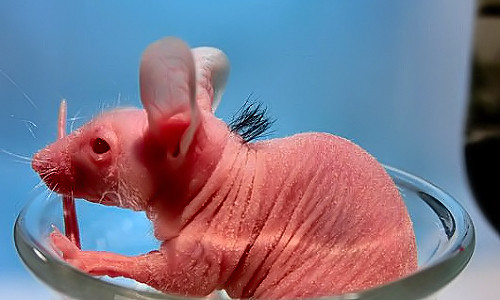The method devised by Professor Tsuji’s team involves reconstructing hair follicle germs from adult epithelial stem cells and cultured dermal papilla cells (dermal papilla are nipple-like projections at the base of hairs) and implanting these germs within or between skin layers.
To recreate the desired hair densities – normally about 120 hair shafts per square centimeter (0.15 square inch) or 60-100 hair shafts per square centimeter following a conventional hair transplantation method – 28 bioengineered follicle germs were transplanted onto a circular patch of cervical skin measuring 1 cm (0.39 in) in diameter. The resulting hair density of 124 hair shafts per square centimeter (plus or minus 17 shafts) turned out to be satisfactory, but there was more good news.
Far more importantly, the implanted follicle germs developed all the proper structures and formed correct connections with the surrounding host tissues, including epidermis, arrector pili muscle and nerve fibers. Also, the stem and progenitor cells along with their niches were recreated in the bioengineered follicles, making a continuous hair-growth cycle possible.
The method has been shown to work with all types of hair follicles, regardless of function, structure and color (depending on the type of the origin follicle). In fact, some features of the hair shaft, such as pigmentation, may be controlled – fancy a new permanent hair color?
Although more research is still necessary (such as further study of stem cell niches and optimizing the way origin follicles are to be sourced for clinical applications), the study constitutes another milestone on the way to next generation regenerative therapies.
Story source:
The above story is reprinted from materials provided by Gizmag.





